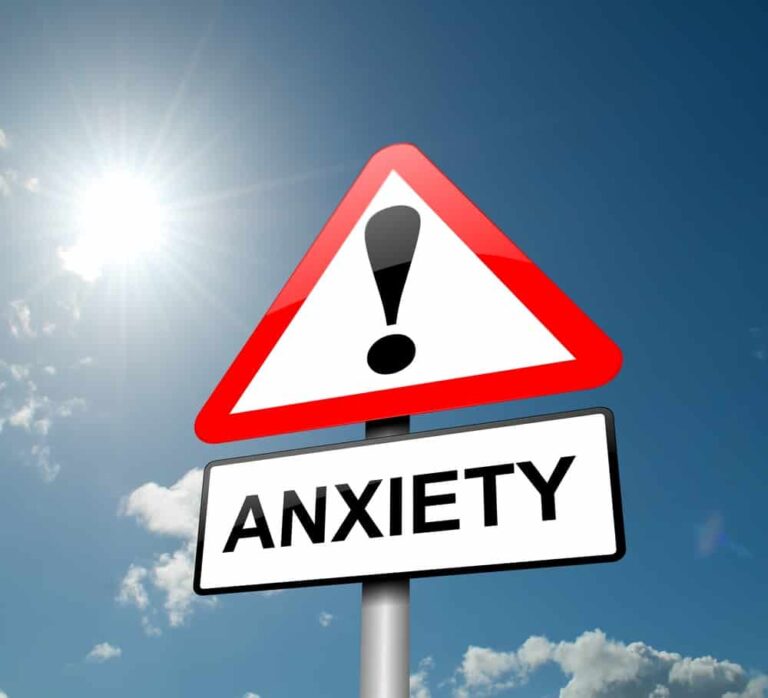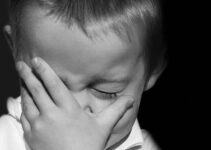“Just because I can’t explain the feelings causing my anxiety, doesn’t make them less valid.”
~Lauren Elizabeth
Anxiety is an acute form of bodily stress. If you’re anything like me, stress can creep up on you without warning. Between working, grocery shopping, cooking, caring for my little Yorkie-girl, laundry, and running after my 10-month old, it’s safe to say my days can get quite stressful. And, when my stress level soars, I feel very anxious.
But, guess what? That’s normal!
Both children and adults have those stressful, anxious moments and that’s perfectly okay.
You only need to worry when those stressful, anxious, ‘pull-your-hair-out’ moments occur more times than not.
If that happens, it’s time to get yourself to a qualified mental health professional for a mental health evaluation. In addition to gaining some medical assistance, you may also learn some helpful ways to keep your stress and anxiety under control.
[thrive_text_block color=”note” headline=””]
It is extremely important to know the signs and symptoms of anxiety at various life stages so you can ensure that you and/or your loved ones receive the care they need to live happy and productive lives, free from the burden of anxiety.
[/thrive_text_block]
Table of Contents
Introduction
Anxiety can manifest in a multitude of ways and with a wide variety of signs and symptoms. One anxious individual may experience mainly physical symptoms, while another may experience mainly emotional ones.
[thrive_text_block color=”note” headline=””]
The key sign of anxiety, however, is an irrational or unfounded fear that something terrible is about to happen. (1)
[/thrive_text_block]
More specifically, it is an intense worry that something is about to go wrong or that you’re in some type of danger, even when you’re really not.
How does anxiety manifest itself?
Many people experience sweaty hands, armpits or feet, chest pains, sickening headaches, stomach pains, diarrhea, and moodiness when they are anxious.(1)
Anxiety symptoms vary depending on the severity of the situation.
The thing is, anxiety is a normal human emotion that serves a very important function – to prevent you from harm when the cause for your fear is real. Think of it as your home alarm system; when someone is about to break into your home it alerts you to impending danger. Anxiety functions the exact same way, except it is internal, warning you of possible harm or danger.
For more information on anxiety, read this guide.
When is anxiety normal?
Everyone, regardless of age, experiences anxiety from time to time. In moderation, anxiety is a normal, healthy human emotion; it is a natural part of the human experience to feel anxiety when faced with scary, challenging or unfamiliar situations. These feelings do not only occur in adults but in children as well.
For example, you may experience anxiety right before you give a presentation at work. In a similar way, your child may experience this kind of anxiety shortly before reciting a poem in front of their English class or taking a Math exam.
It may sound odd to think that children can become anxious, but they can, especially when faced with daunting tasks like speaking or performing in front of others. They can also become anxious when taking tests or transitioning from one grade to another.
These types of situations can trigger ‘healthy’ anxiety, which is useful in motivating them to do their best. It can also help them prepare for any “what ifs.” For example, “What if I don’t do well on the test, what will my next step be?” Or, “What if things don’t go as planned, what is my Plan B?”
So, some anxiety is normal and can serve a purpose by helping your child stay focused, alert, and self-aware so they can make good decisions and protect themselves from harm. However, if your child experiences high levels of anxiety, and it occurs too often, it can disrupt his or her life.
When does anxiety become a problem?
[thrive_text_block color=”note” headline=””]
Anxiety becomes a disorder when it persists, worsens, and/or interferes with your child’s relationships, health, self-esteem and/or school performance. (3)
[/thrive_text_block]
Anxiety symptoms can range from slight uneasiness to a full-scale panic attack (and anything in-between), depending on the individual and the situation. (2)
Anxiety can prevent children from completing chores, competing in sports, participating in activities, having a social life, and/or finishing projects, tests, and homework assignments. Moreover, severe anxiety can cripple your child, taking the joy from their young life.
So, what should you do, if you suspect that an anxiety disorder is disrupting your child’s life?
[thrive_text_block color=”note” headline=””]
Scheduling an appointment with your child’s pediatrician is a good first step.
[/thrive_text_block]
Listed below are the signs and symptoms of anxiety to look for at every age.
Infants
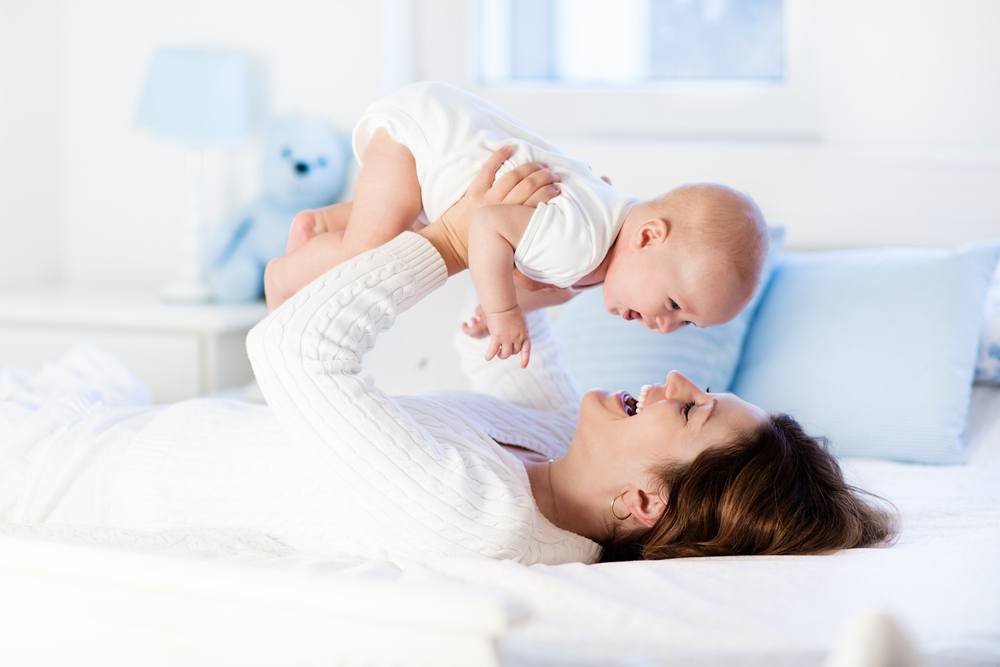
Anxiety can be difficult to detect in infants, simply because mild anxiety is a part of the developmental process. It is important to understand that babies come with a variety of temperaments: some are laid-back, some are active, some are sluggish, some are happy and some are fussy.
If your baby appears slightly anxious when you leave the room or put them down for bed, don’t be alarmed-it is normal for infants to experience some anxiety in certain situations. For instance, they may feel anxious when they are around unfamiliar people or in new places. They may also become anxious when they hear a loud noise and/or when you or someone else moves without warning.
However, if they become more and more anxious over time to the point that they have trouble functioning, it may be time to see a pediatrician.
Unfortunately, many parents overlook the early warning signs of anxiety disorders until it has psychologically, emotionally, and even physically crippled their children.
Why does this happen? Well, primarily because most people don’t know what to look for.
Listed below are the classic signs and symptoms of anxiety in infants. (5)
1. Is Extremely Clingy
It is common for babies to experience both separation anxiety and stranger anxiety before their first birthdays. However, just because your baby is clingy and/or afraid of being away from you or in the presence of strangers doesn’t necessarily mean they have an anxiety disorder. It is developmentally normal for your little one to experience some anxiety in certain situations. It becomes a cause for concern when it affects his/her life – i.e. prevents him/her from eating, sleeping, peeing/pooping, or playing. The life of a baby.
Don’t be alarmed if your little one shyly buries their head in your chest or if they hide behind your legs when others come around; that is a normal display of mild anxiety. If this occurs, simply stoop down to their level and talk to them in a calm, soothing voice. Reassuring your child that everything is fine –you are fine, Buddy (the family dog) is fine, his siblings are fine (if he/she has some), the house is fine, and he/she is fine-can calm them down.
2. Is Restless at Night
Does your baby tend to be restless a lot? If so, they may be experiencing anxiety.
Infants who suffer from anxiety tend to have problems sleeping at night, as do children who are overstimulated. So, what should you do to ease your baby’s anxiety? I suggest you maintain as much of a calm atmosphere as you can. Then, develop naptime and bedtime routines. Infants need structure and routines to function properly. This is especially true during naptimes and bedtimes.
Create a schedule and sleepy-time routine for your baby and stick to it! Don’t forget to reassure your child that they are safe and it’s okay to go to sleep. Add in a calming activity before bed and do the same thing every single night. For instance, my husband and I give our son a bath, feed him dinner, read him a book, give him a bottle, and rock him to sleep every night before bed.
[thrive_text_block color=”note” headline=””]
A regular bedtime routine that is both quiet and soothing can help your infant feel more protected and less anxious.
[/thrive_text_block]
3. Tends to Be Overly Weepy
Anxious infants tend to cry a lot when they are stressed, anxious, tired, or afraid. In fact, crying is one of the main signs that your peanut is experiencing anxiety. Not all infants cry when anxious, but many do.
In fact, an anxious infant’s weepiness may verge on hysterics until he/she is so worked up that they can’t catch their breath. My son once became so anxious about going to the doctor that he not only couldn’t catch his breath but also vomited.
What did I do to help my son? Well, first I picked him up, vomited covered and all, and hugged him. Then, I calmly reassured him that he was safe and everything was going to be okay. It worked.
If your little one becomes overly weepy because they are stressed, afraid, and/or anxious, reassure them as many times as it takes to calm them and make them feel safe. While children may cry for a minute or two, children are adaptable, and many can soon busy themselves with other things- toys, cartoons, Nana or Papa, the family dog, etc. But, if your infant has a hard time calming down and adapting, you may need to take him/her to see a pediatrician to rule out anxiety disorders or physical ailments.
Toddlers
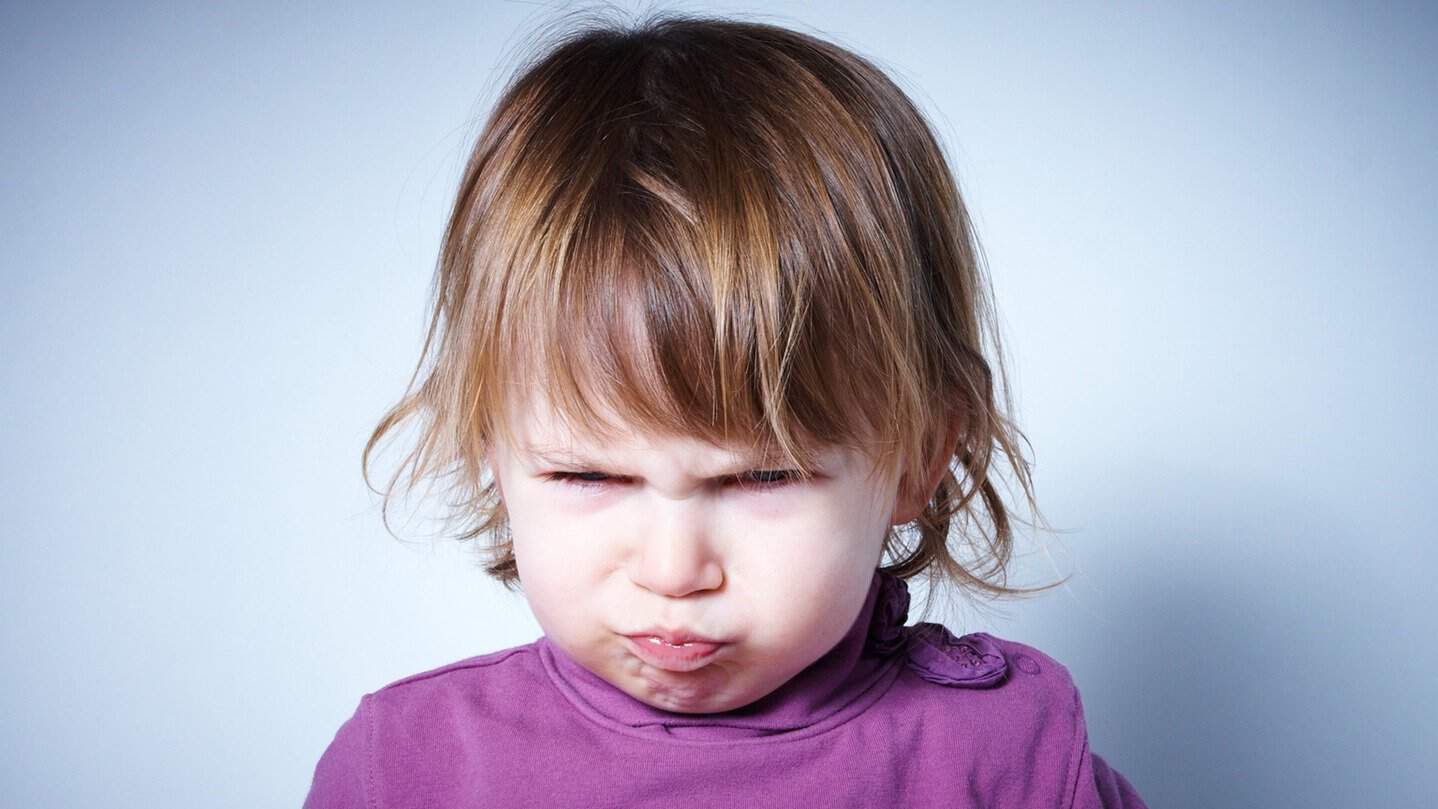
Another age group that can experience anxiety is toddlers. Toddlers are children between the ages of 12 and 36 months. These little beings typically exhibit signs of anxiety in response to challenging or stressful situations. In fact, one of the most common anxiety triggers in young children is fear. It is important to understand that most toddlers experience “healthy” fears – i.e. separation and stranger anxiety. These fears are indicative of normal cognitive development in this age group.(6)
For most toddlers, separation and stranger anxiety typically peak between 1 and 2 years old. It is also during this time that toddlers become closely attached to their parents. For instance, the meltdowns, tantrums, crying spells, and hissy fits will probably worsen during toddlerhood. Yikes!
At this age, your little one may start testing limits and begin to start trying to establish more control of his/her life by asserting independence. So while your little explorer may understand that your absence is only temporary, they would prefer that you stay in their line of vision at all times. Don’t underestimate toddlers. They are quick learners and recognize quickly that if they cry loud enough or throw tantrums in the middle of Target, you’ll come running. It works every time, am I right?
Listed below are the classic signs and symptoms of anxiety in toddlers. (6)
4. Has Chronic Aches & Pains
Does your toddler appear to feel bad constantly? If so, it is possible they may be anxious about something.
A toddler can become so anxious that he develops aches and pains, experiencing repeated headaches and stomachaches. I know what you are thinking, “But, how will I know if my toddler has aches and pains if they can’t talk?”
Some toddlers may have more verbal skills than others, but even if your child is unable to verbalize their discomfort, you may be able to pick up on their distress simply by observing their behavior. If you start to notice your little one isn’t eating like they normally do, if they spit up or vomit immediately after eating, if they seem jittery or sluggish, or if they don’t appear to want to play with their toys or friends, then they may be suffering from anxiety.
[thrive_text_block color=”note” headline=””]
If you notice a sustained change in your toddler, it’s best to schedule a visit with a pediatrician. A medical professional can determine the true cause of your child’s aches and pains.
[/thrive_text_block]
5. Is Aggressive & Careless
Has your toddler become more aggressive and careless lately? If so, they may be experiencing a bout of anxiety.
An anxious toddler may exhibit anxiety, stress, and/or fear by acting aggressively towards others. They may lash out at you, their siblings, a pet, relatives, friends, or even their daycare teacher.
Your tot may even take their frustration and anxiety out on themselves. Carelessness is also a form of anxiety, so if your toddler is anxious, they may run in the street after you’ve told them not to, or hide from situations that scare them.
6. Has an Excessive Fear of Being Separated From Loved Ones
A toddler who has an excessive fear of being separated from loved ones may have anxiety. While it is normal for many toddlers to experience mild anxiety when separated from their parents, if the anxiety appears to be getting worse or is so bad that your child vomits and cries hysterically every time you step away from them, it may be time to see their pediatrician.
If your child has separation anxiety, he/she will most likely cry and cling to you when you try to leave. They may be afraid you will leave and not come back, so they cling to you to prevent you from leaving.
Keep in mind that your toddler may continue to cry and refuse comfort from their temporary caregiver once you have left. It doesn’t matter if you leave your toddler for the day, or if you simply go into another room for a few minutes, your toddler may develop anxiety because they can’t see you.
Moreover, your toddler may also experience separation anxiety from anyone he/she is attached to like siblings, grandparents, relatives, friends, pets, home, daycare teachers, etc. If they have an anxiety disorder, your child may become panicky, fearful, or physically ill.
7. Has an Extreme Fear of Strangers
Does your chatty toddler clam up and/or cry, when strangers approach? If so, your child may be experiencing stranger anxiety.
If your toddler has an extreme fear of strangers, he/she may indeed have stranger anxiety. How can you tell if your child has this form of anxiety? If they cry and cling to you even in the presence of friendly people or continue to be fussy, scared, and timid even after the stranger has left, then the child is probably extremely afraid of strangers.
Stranger anxiety typically occurs during a child’s first year of life, but it can reoccur throughout the toddler years.
8. Has Irrational Worries & Concerns
Some anxious toddlers have irrational worries and concerns. For instance, your child may be afraid of losing a parent or family pet, even though there is no indication that this will happen anytime soon. Or, they may be afraid of the neighbor’s 5 pound Yorkie, but not know why. A toddler may also be afraid to ride in a car or on a plane. For some children, these fears arise from a specific incident like being attacked by a dog or being in a car accident.
It is even common for young children to develop phobias of particular animals like dogs, cats, snakes, wolves, lions, or bears, even if they have never seen them in person.
Note: Even adults have irrational worries and concerns from time to time and that is completely normal. As mentioned above, a healthy dose of anxiety serves a biological protective purpose.
9. Has a Fear of Going to Daycare
We all have times when we dread going to work. Similarly, your toddler may have the same fear of going to daycare.
If your little explorer flat-out refuses to go to daycare, cries hysterically and clings to you, begs you not to take him/her there, becomes physically ill or throws massive tantrums every time you leave them there, there is a good chance your toddler is experiencing anxiety about going to daycare.
Considering other reasons why your toddler might be hesitant to go to daycare is important in evaluating whether or not your child is suffering from anxiety, such as difficulties like being bullied by other children.
[thrive_text_block color=”note” headline=””]
I suggest you speak to the daycare teacher to see if they have noticed any changes or unusual activity around your child.
[/thrive_text_block]
10. Is Extremely Shy
Some extremely shy toddlers are timid because they are anxious or fearful. Shyness by itself is not an indication of anxiety. However, when combined with the other symptoms above, it could mean that your child is suffering separation and/or stranger anxiety. More specifically, if your child becomes alarmed or withdraws around new people or in new situations, if they cry and cling to you when you step away from them, or if they cower when asked to play with others or join a group, there is a good chance they are experiencing some form of anxiety.
Preschoolers
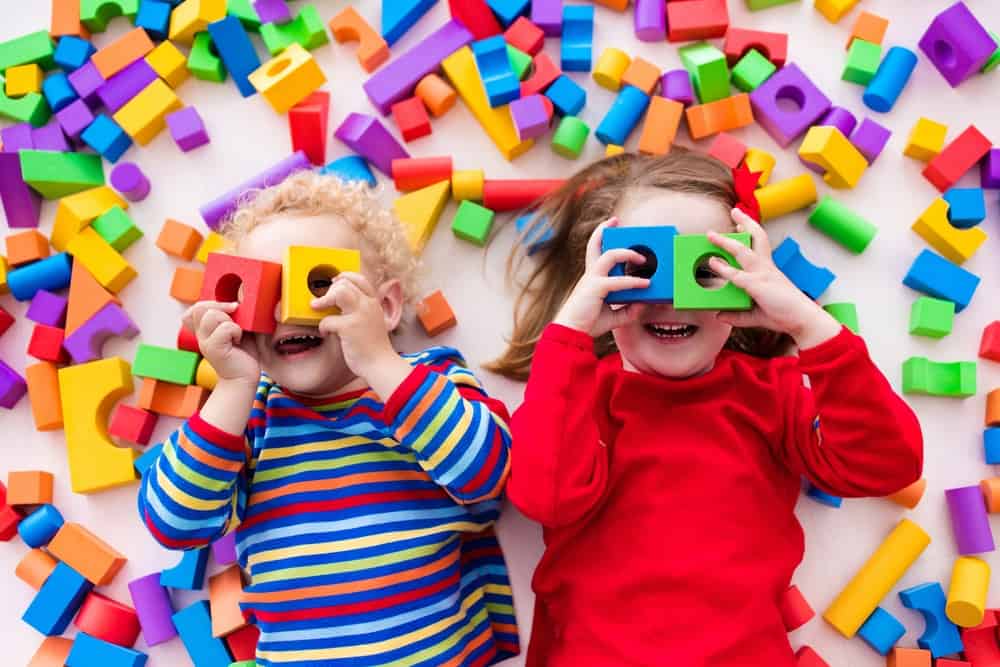
Ahh, the preschool age.
For most parents, this age can actually be the most exasperating when it comes to separation anxiety. Just when you think your preschooler has developed some semblance of independence, the meltdowns, tantrums and crocodile tears come roaring back. This can happen because of new stressors like gaining a little brother or sister, dealing with an illness in the family, and/or coping with their parents’ divorce. The good news is that according to experts, bouts of anxiety typically don’t last more than a few weeks.
The worst bout of separation anxiety occurs when a new sibling arrives and your preschooler realizes that he/she has been “dethroned” by a younger addition. It is during this time that your little one starts to worry (sometimes excessively) that you, Mommy and Daddy, will forget about him or her in favor of a newer and shinier version. Even if your preschooler knows and understands that you won’t abandon them, it may not make that fear go away.
Listed below are the classic signs and symptoms of anxiety in preschoolers: (7)
11. Is Very Inflexible
Although most preschoolers love routines and structure, anxious preschoolers simply can’t function without them. Anxious preschoolers tend to be very inflexible and resistant to change. Since they do not do well with unpredictability, they need schedules and rituals that are consistent and repetitive.
In addition, anxious preschoolers tend to want to know what is going to happen from minute-to-minute and become ‘unglued’ if something changes.
At school, anxious preschoolers may appear stubborn and inflexible. For instance, a change in class routine (i.e. having story time before recess, when they usually have recess before story time) can cause a massive meltdown.
12. Is Hypersensitive to Clothes
Another sign of anxiety in preschoolers is a hypersensitivity to clothes. Some anxious children simply don’t like the feel of certain fabrics or certain colors, so they experience anxiety when forced to wear clothes that contain these elements. For instance, if your preschooler is anxious, they may become irritated, annoyed, or upset when their shirt tag rubs their neck, or when the toe seam gets in-between their toes when they walk.
Some anxious preschoolers may also have clothing preferences, such as only wearing flip-flops or sandals instead of dress shoes or tennis shoes, or shorts and jeans instead of khakis or dress pants. Anxious children who are hypersensitive to clothes may become highly uncomfortable when forced (or required) to wear something they don’t want to wear.
13. Has a Noise Sensitivity
Some anxious preschoolers may be sensitive to noise. They may become startled by loud or repetitive noises like the toilet flushing, running bath water, the vacuum, the garbage disposal, barking dogs, thunder, loud televisions or radios, house alarms, loud chewing, popping gum sounds, etc.
14. Has Ritualistic Tendencies
Anxious preschoolers tend to have ritualistic tendencies. They thrive on rituals and routines that help them ease their anxiety.
An anxious preschooler may become upset if a teacher or their parent changes up a routine. For example, an anxious child may have a meltdown if his/her preschool teacher switches up the routine of having story time before nap time. Or, they may have a fit if the mac and cheese is placed in a different section than normal on their plate at lunch. These children may even insist that you serve their food in a certain way (i.e. removing the crust from bread or cutting sandwiches into triangles).
Moreover, an anxious preschooler may have specific bedtime routines that require you to read the same two books in order every night or line up their toys in a certain way before tucking him/her in for the night. And, if you fail to do these rituals in order, every time, your anxious child will make you re-do them until you ‘get them right.’
15. Is Overly Dependent
An anxious preschooler may follow his/her parent around. Although most preschoolers follow their parents around the house, anxious ones may have complete meltdowns if Mommy and Daddy step out of the room for even a second.
For instance, if your child is anxious and you leave the room to go to the restroom, they may follow you and hover by the door (if it’s closed) until you come out. They may also whine until you come back out. At school, an anxious preschooler may follow their preschool teacher around. These children tend to relish the opportunity of being the ‘teacher’s assistant.’ Furthermore, anxious preschoolers may need extra attention and reassurance from their teachers to feel safe enough to relax and try new things.
16. Is Slow to Warm to New People
Anxious preschoolers are less likely to be friendly towards unfamiliar people. In fact, don’t be surprised if your little one hugs your legs when strangers approach or is slow to warm to new people. In fact, if your child is indeed anxious, he/she will probably get overwhelmed in busy or crowded places like the zoo or at birthday parties.
At school, anxious preschoolers tend to avoid class activities, sports, or classroom parties, preferring to sit by himself/herself, rather than engaging with his/her classmates.
17. Tends to Have Insomnia
Some young children with anxiety suffer from insomnia. As a result, they often want Mommy or Daddy to lie down with them until they are sound asleep. However, if you try to get up once you think your child’s asleep, they may awaken and beg you to sleep in their bed.
It is not uncommon for anxious preschoolers to wake up several times at night due to bad dreams or separation anxiety. Because this child has sleep issues, they are more likely to be sleepy during class and do poorly on tests than a child who is not anxious and who sleeps well at night.
18. Is Extremely Stubborn (Especially with Food)
Anxious preschoolers tend to be extremely stubborn (especially about food) both at school and at home. In other words, these stubborn little people are super picky about the foods they eat. So, food selection and consumption become epic battles.
Anxiety may manifest through a refusal to eat school lunches. They may even forego lunch if it’s not something they like – i.e. pizza, hot dogs, or chicken tenders.
19. Is Deathly Afraid of Getting Dirty
Some anxious preschoolers are deathly afraid of getting dirty (i.e. hands, face, clothes, shoes, etc.). These children tend to avoid activities that are messy and have fits and meltdowns if something on their bodies gets ‘dirty.’ So, if your child insists on washing their hands every time they get even the tiniest bit dirty, they may be experiencing anxiety.
At school, this phobia may present itself when your child repeatedly asks to change clothes (after recess or lunch) because they got a speck of dirt or food on their clothes. It may also manifest when your child has a meltdown because they got paint, glue, chalk, or glitter on their hands.
Kindergartners

Did you know that most childhood anxiety disorders arise around age five?
Kindergarten is when children enter school for the first time and is a big transition for young children. If you think about it, it makes sense that a child can become anxious during this time. It’s like how we, as adults, feel when we start a new job. Most of us are anxious for the first week or two, or until we feel more comfortable with our new surroundings. Our children are no different.
During this time, your little one is forced to learn how to cope with challenging new situations and pressure. And, although mild-to-moderate anxiety during this exciting and scary time is normal, if the anxiety persists, worsens, and/or affects your child’s life and academic performance, he/she may have an anxiety disorder.
It is also important to understand that some anxious kindergartners may “act out” (i.e. fits, crying spells, tantrums, misbehavior, and/or avoidance) when stressed, worried, or overwhelmed. As a result, they run the risk of being misdiagnosed as hyperactive, disobedient, and “unruly,” when in reality, they are suffering from anxiety or an anxiety disorder.
Listed below are the classic signs and symptoms of anxiety in kindergartners. (11)
20. Is Afraid to Go to School
One of the most common culprits of anxiety in kindergartners is a fear of going to school. Anxious kindergartners who are afraid to go to school may complain of feeling sick and may become so worked up about going to school that they trigger gastrointestinal distress (i.e. nausea, vomiting, abdominal pain, and diarrhea). The result can be a missed day or two of school. It is also common for the symptoms to go away once the child is allowed to stay home from school.
Kindergarten can be frightening for a 5-year-old. For children who are both shy and anxious, going to school and being surrounded by unfamiliar teachers and children can be extremely intimidating.
21. Is an Extreme Worrier
Anxious kindergartners are extreme worriers. More specifically, they tend to excessively fret over things like family issues, grades, classmates/friends, skills, acceptance, sports performance, and athletic/academic abilities. If a child suffers from generalized anxiety disorder (GAD), he/she may harbor an unhealthy amount of anxiety, leading to poor self-esteem and emotional and physical health, and an inability to function properly.
Note: Anxious kindergartners tend to be perfectionists, setting impossibly high standards for themselves.
Note: GAD is only diagnosed after it has persisted for at least 6 months and has negatively affected your child’s life.
Grade Schoolers

Although most grade schoolers experience anxiety on occasion, the majority do not develop anxiety disorders. For those that do, however, anxiety can negatively affect their daily functioning (i.e. concentrating, eating, sleeping, and excelling at school).
Anxious grade schoolers may avoid expressing their true feelings because they’re worried that their classmates, friends, teachers, and parents may view them in a negative light. The last thing anxious children want is to be viewed as “babyish,” weak, or afraid.
Note: Males are more likely than females to suppress their anxiety. (8)
Listed below are the classic signs and symptoms of anxiety in grade schoolers. (3)
23. Physical Signs of Anxiety
- Constantly complains of headaches and/or tummy aches – even if there’s no medical reason for them
- Repeatedly refuses to eat snacks or lunch at school
- Refuses to use the restroom, except at home
- Is impatient, squirmy, hyper, and/or distracted
- Trembles, shakes, and perspires profusely when faced with intimidating situations
- Continuously flexes his/her muscles
- Tends to have a hard time falling and staying asleep at night
24. Emotional Signs of Anxiety
- Cries a lot
- Is extremely sensitive
- Tends to be cranky and/or fussy – without reason
- Is afraid of making even small mistakes
- Tends to have severe test anxiety
- Repeatedly has panic attacks
- Has at least one phobia (i.e. about snakes, dogs, insects, bears, or dogs)
- Tends to have exaggerated fears (i.e. about natural disasters like: tornados, hurricanes, fires, etc.)
- Tends to be afraid that peers and teachers will figure out that he/she has learning and/or comprehension issues
- Habitually worries about the future (i.e. a fourth-grader may constantly worry about starting high school)
- Becomes deathly afraid of being dropped off at school, a friend’s house, or with relatives, so much so that he/she becomes physically ill
- Has repeated nightmares about losing a parent, pet, and/or loved one
- Becomes so distracted by worries and fears that he/she is unable to play with others or his/her toys
- Continuously has obsessive thoughts or performs compulsive behaviors (i.e. foot-tapping, whistling, handwashing, etc.)
- Has chronic fits, meltdowns, and tantrums
25. Behavioral Signs of Anxiety
- Tends to ask “What if?” a lot (i.e. “What if our house burns down right before Christmas and all of our gifts are burned up?”)
- Typically avoids participating in class and after-school activities
- Tends to be quiet and/or to act preoccupied when expected to work with others
- Refuses to go to school
- Prefers to stay inside by himself/herself during recess, lunch, and breaks
- Usually avoids social situations – i.e. birthday parties and sleepovers (after school and/or on weekends)
- Refuses to speak to unfamiliar (or familiar) people at the store or at a restaurant
- Can become overly emotional or irate when separated from loved ones
- Frequently seeks approval from parents, teachers, and/or friends
- Constantly complains that he/she can’t do something – even though he/she has never tried to do it
- Excessively worries almost every day about something
- Has a hard time sleeping at night and/or suffers from sleepiness during the day
- Tends to be extremely restless or fatigued during the day
- Has trouble focusing and concentrating
- Tends to be irritable most of the time
Teens

Most teens experience “teen angst” at one time or another. As mentioned previously, anxiety, in moderation, is a healthy reaction to overwhelming and stressful situations. It is needed to help teens deal with delicate and complicated situations like studying for an upcoming exam, completing a big class project by the deadline, or participating in important events like prom, graduation, a sport’s championship, etc.
For most teens, the anxiety is fleeting; it usually goes away once they enter young adulthood. However, if the “harmless” anxiety continues, it could indicate an anxiety disorder. If your teen develops an anxiety disorder, he/she may experience extreme worries, nervousness, intense fear, and self-imposed social isolation (due to a fear of certain places and/or activities).
Listed below are the classic signs and symptoms of anxiety in teens. (9)
26. Is Extremely Nervous
The teen years can be the most challenging times for children. With raging hormones, fluctuating emotions, and growing independence, it’s almost impossible not to have anxiety. Anxious teens may worry about past, present, or future events. This is especially true of teens with a generalized anxiety disorder (GAD).
For instance, a teen with this anxiety disorder may continuously worry about friendships, grades, boyfriends/girlfriends, rumors, the health of their parents, upcoming events like the prom or graduation, world events, past behaviors, changing schools or neighborhoods, family issues, their appearance, social media perceptions, etc.
They also have a hard time prioritizing these worries so they won’t disrupt their lives. Other symptoms associated with GAD in teens include: restlessness, jitteriness, moodiness, touchiness, and/or agitation. These teens may also have muscle tension and insomnia.
Note: To be diagnosed with an anxiety disorder like GAD, your teen must experience these symptoms most of the time for at least six months.
27. Tends to Be Overly Panicky
Anxious teens also tend to be overly panicky. More specifically, it’s common for them to have chronic anxiety and recurrent panic attacks. Teens who have frequent panic attacks may avoid socializing and participating in activities out of fear that they will have a panic attack in the presence of others.
During a panic attack, your teen may appear “on edge,” jumpy, prickly, and/or agitated.
It’s important to note that left untreated, panic attacks can morph into other anxiety disorders like agoraphobia (extreme fear of crowded and public spaces), dementophobia (fear of insanity), and thanatophobia (fear of death), as well as physical ailments, such as tachycardia (heart rhythm disorder), shortness of breath, chest pain, a choking sensation, excessive perspiration (sweating), tremors, gastrointestinal distress (vomiting, nausea, abdominal pain, and diarrhea), temperature fluctuations, numbness and tingling in the arms and legs, dizziness, and derealization (loss of reality).
28. Has an Illogical Fear of Being Away from Loved Ones
If your teen is afraid to be away from you, he/she is probably suffering from separation anxiety. It is the threat of being separated from loved ones (Mom and Dad) that triggers the anxiety. And, although this form of anxiety usually occurs in younger children, it can also be present in teens. Separation anxiety can lead to stomachaches, headaches, fatigue, chest pains, muscle aches, nightmares, profuse sweating, nausea, diarrhea, and vomiting.
29. Has an Intense Fear of Being Embarrassed or Humiliated
Some anxious teens have an intense fear of being embarrassed or humiliated. This type of fear is referred to as “social phobia.” Social phobia is an extreme fear of being shamed in social situations. This type of anxiety can lead to shyness and prevent an anxious teen from doing or saying certain things in front of others, which keeps these teens from being their authentic selves.
For example, a teen with social anxiety or social phobia may shy away from attending social events like parties, concerts, proms, graduations, etc. because he/she is afraid of being embarrassed or humiliated. They may also avoid speaking in front of crowds or to authority figures. It’s common for these teens to abhor speaking in public due to a fear of being laughed at, judged, or ridiculed.
It is important to note that this fear can extend to any situation that is new, unfamiliar, and/or uncomfortable. Lastly, anxious teens usually prefer to stay in the background. They typically hate being closely watched by others.
30. Has Some Very Specific Fears
While some anxious teens have general or vague fears like a fear of the unknown or future, others have very specific fears and phobias. For instance, a teen with a specific fear or phobia may have an intense, unrealistic fear of being swept up in a tsunami, or they may be deathly afraid of anything purple (a color phobia). It is possible that teens with specific fears or phobias don’t even realize that their fears are irrational. In fact, for them, they are very real.
And, if confronted by the feared object or situation, these teens tend to experience extreme distress. As a result, teens with specific fears tend to avoid their triggers, if possible. It is important to note that specific fears and phobias can negatively affect a teen’s life, causing major disruptions and leading to a host of symptoms (i.e. tachycardia, sweaty palms, and syncope).
Adults

Although anxiety symptoms vary from person to person, there are some classic symptoms that typically occur in the majority of adults with the condition. For instance, when I experience anxiety, I tend to sweat profusely and my stomach clenches up. I also tend to become irritable and experience facial flushing. When people become anxious, their bodies react to the stress by going on ‘high alert.’ Their brains signal to their bodies to either fight or flee the situation. As a result, their brains and bodies work together to prevent them from being harmed. That is why knowing the symptoms of anxiety can help you ward off future panic attacks or manage an anxiety disorder.
Listed below are the classic signs and symptoms of anxiety in adults. (10)
Wakeful
If you suffer from anxiety or an anxiety disorder, it is common to experience insomnia. You may wake up early and be unable to get back to sleep. Or, you may sleep excessively, never wanting to get up and start your day. Furthermore, you may take multiple naps during the day because you feel so emotionally and physically drained.
Has Tense, Twitchy Muscles
Do you get tense, twitchy muscles when you’re highly stressed or overwhelmed?
High levels of stress can lead to anxiety, triggering your body’s fight or flight hormones. These hormones help you avoid dangerous and/or uncomfortable situations. In addition, if you suffer from anxiety, you may not only experience tense, twitchy muscles, but also diarrhea vomiting, stomach pain, chest pain, dizziness, perspiration, shortness of breath, and nausea.
Anxiety can cause your chest wall muscles to clench up, triggering chest pain and pressure, making it extremely uncomfortable to breathe. It is also common to experience a gagging or choking sensation accompanied by tense, twitchy muscles during an anxiety attack.
Has Prolonged Nausea
It is common to experience prolonged nausea during anxiety attacks. More specifically, you may experience gastrointestinal distress – i.e. stomach upset, stomach pain, gas, constipation, diarrhea, and vomiting when you are anxious. Nausea, along with the other gastrointestinal symptoms, may last as long as the anxiety is present, but go away when it subsides.
Has Heart Palpitations
Anxiety can increase your heart and pulse rates.
According to the Anxiety Disorders Association of America, when your heart palpitates due to stress, fear, or trauma, it beats vigorously against your chest wall. (14) This can feel like your heart is missing a beat or jumping out of your chest. Some with anxiety may also experience chest pain and shortness of breath along with the palpitations. The good news is, heart palpitations usually disappear once your anxiety level and heart rates have decreased.
Harbors Irrational Fears or Dread
Do you ever dread or fear an event, activity, task, location, or even person? If so, you may be experiencing generalized anxiety, or if this feeling is chronic, it is possible you may have an anxiety disorder.
Anxiety attacks can arise suddenly and produce overwhelming feelings of dread, fear, and/or worry. In other words, if you have anxiety, you may have an irrational fear of something.
For instance, you may dread going on a vacation, because you are afraid you’ll get lost or you’ll have a terrible time. Or, you may dread going to work, because it is evaluation time and you’re not sure how you will be scored. You may even have an overwhelming fear of dying, even though you are currently in good health.
Prolonged periods of this overwhelming fear or dread can cause you to become depressed, moody, or highly irritable, and/or you may have trouble focusing, calming down, or sleeping.
During one of these “attacks,” you may feel as though you are losing control of everything around you. In addition, you may lose your grasp on reality and become highly emotional. As a result, you may feel a strong urge to escape your situation and move to a different location to ease your anxiety. In severe cases, this dread, worry, and fear can make you feel as if you are having a heart attack or dying.
Is Tense
Anxious adults tend to suffer from tension. Some constantly complain that their necks, backs, and heads hurt. When you are anxious your muscle tense up, causing you to suffer aches and pains.
Has Hot Flashes
Lastly, if you suffer from anxiety, you may experience hot flashes before, during, or after a panic or anxiety attack. These hot flashes may be accompanied by hot and cold sensations and excessive sweating.
Older Adults

Approximately 44 million adults in the United States have anxiety disorders, with older adults being particularly at-risk. (11) Older adults, also referred to as the elderly or seniors, have a higher risk of experiencing anxiety attacks and developing an anxiety disorder, and this is due to older adults experiencing more age-related losses, more aches and pains, chronic illness, stress, trauma, and disabilities, taking more medicines, and typically having multiple co-existing conditions like dementia, Alzheimer’s disease, and/or depression. (12)
It is important to understand that anxiety in older adults may stem from age-related fears, worries, and concerns. For instance, an older adult may have an unrelenting or overwhelming fear of falling, suffering a heart attack or stroke, being placed in a nursing home, becoming injured, having to keep up with numerous medications, being left alone, isolated, abused, or dying.
Older adults experience more bodily pain as they age, which triggers anxiety. In fact, according to John Hopkins Medicine, approximately 9% of older adults develop anxiety disorders each year. (13)
Other symptoms of anxiety in adults include: an accelerated heart rate, breathing difficulties, tremors, nausea, vomiting, sweating profusely, confusion, agitation, and/or insomnia. In addition, older adults with anxiety may refuse to follow routines, participate in activities, and may opt out of social situations. On the flip side, they may become obsessed with certain routines and be unable to focus on anything else. Moreover, anxious older adults have also been known to hoard. These individuals may also worry excessively, and/or become moody and depressed.
By constantly avoiding certain situations and/or making excuses for why one cannot attend social events and/or participate in group activities, anxious older adults place themselves at risk of developing depression, along with anxiety.
Lastly, chronic anxiety attacks or anxiety disorders can lead to physical illnesses like tension headaches, gastrointestinal distress, chest pains, obesity, eating disorders, and high blood pressure and/or phobias. In addition, some anxious older adults self-medicate with illegal substances, alcohol, and prescription pain pills to help them cope with stress. As a result, some older adults, depending on their age, can be forgetful and accidentally overdose.
Conclusion
Anxiety is one of the most common mental health conditions, experienced by all ages, ethnic groups, and genders.
Most people experience mild-to-moderate anxiety at some point in their life, but when it persists, worsens, and interrupts daily functioning, there is a good chance you are suffering from an anxiety disorder.
This is especially true if the anxiety is triggering extreme amounts of unrelenting fear, agitation, nervousness, concern, dread, and/or worry.
When your anxiety becomes extreme or irrational on a consistent basis, it’s time to see a mental health professional. Professionals are equipped to help you overcome your phobias and better manage your anxiety.
There are a variety of effective treatment options available like therapy and medications to help those who suffer from anxiety.
You may also like:
[one_half_first]
The Best Weighted Blanket According to Our Psychologist (2021 Update)
[/one_half_first][one_half_last]
[/one_half_last]
References:
1) Helpguide.org. (2018). Anxiety disorders and anxiety attacks.
2) American Academy of Child and Adolescent Psychiatry. (2017). Anxiety and children. Retrieved from
3) Overcoming Depression. (2018). 6 types of anxiety disorders.
4) Psych Central. (2018). Causes of anxiety disorders.
5) Jernigan, K. (2017). Anxiety in infants. Livestrong.
6) AT: Parenting Survival for Anxiety and OCD. (2018). 10 signs of an anxious toddler. Retrieved from
7) Parenting. (2018). Preschoolers and separation anxiety.
8) Slate. (2018). Nervous nellies.
9) American Academy of Child and Adolescent Psychiatry. (2011). Facts for families: Children who won’t go to school (Separation anxiety). Eric Digests. Retrieved from https://eric.ed.gov/?id=ED533386
10) Village Behavioral Health. (2018). Causes, symptoms, and effects of anxiety.
11) Anxiety and Depression Association of America. (2018). Anxiety: Understanding the facts.
12) Stewart, K. (2018). Helping elderly loved ones through the anxiety of aging. Everyday Health.
13) John Hopkins Medicine. (2018). Mental health disorder statistics.

